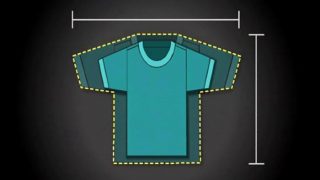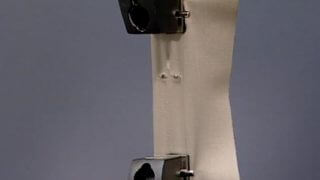Quality Testing
Quality Testing & Construction
Consumers purchase apparel and home products made from a multitude of raw materials. It is critical that fibers, yarns, fabrics, and garments adhere to the particular specifications for each product. Yarn and fabric construction can be broken down into elements that affect performance and costs.
Fiber
Fibers are the key building blocks of all textile and apparel products, and fiber characteristics have a huge impact on yarn, fabric, and garment performance. The key size characteristics of a textile fiber are a high length-to-diameter ratio, of at least 1,000 to 1, and a diameter or fineness no greater than 20 microns, or the equivalent of 0.01 inches.
Yarn
Yarns are the core components of all knitted and woven fabrics. Fabrics are specified according to the yarns selected and construction parameters. The yarns must have sufficient strength and elongation for fabrication. Yarn designations are standardized to make communication of yarn and fabric parameters easier and more precise. These yarn notations are used by textile mills, designers, product specifiers, apparel manufacturers, and sourcing agents to ensure product performance and consistency. Examples of yarn specifications include the size of the strand, the type of yarn, and its structure, strength, twist level (if spun), and evenness. For any fiber type, yarn properties depend on how the fibers are assembled.
Fabric
Proper fabric construction is not unlike the construction of a building or other complex structure. The fabric’s components and how they are assembled determine its physical properties, aesthetics, and costs. The manufacturer controls these inputs in order to meet customers’ needs and to make a consistent product in a way that is cost-effective and meets production expectations. Customers must understand how products are made to ensure that they are getting what they ordered and at a fair price.
Care & Appearance in Quality Testing
Apparel and home products are valued for their ease of care and their appearance before and after laundering. Key characteristics important for appearance are smoothness and resistance to shrinkage. Also important for garments are the absence of wrinkles, maintenance of wanted creases and pleats, and flatness of cuffs, plackets, and collars. Important colorfastness properties include light fastness and resistance to color loss, staining, and rocking.
Appearance
Various methods have been developed to measure changes in the appearance of a textile or garment as a result of cleaning. Appearance may change as a result of the abrasion inherent in laundering and drying, which can cause fuzzing or pilling and changes in color. Consumers value a wrinkle-free appearance, seam smoothness, and retention of creases or pleats.
Colorfastness
Loss of color during home washing or laundering can be related to the dyestuff used, poor rinsing in the dyehouse, or the use of unsuitable laundry products. The consumer cares only that the product has lost color, that the shade has changed, or that other items or other parts of the garment have been stained by unfixed color. “Colorfastness” is defined as the resistance of a material to change in any of its color characteristics and to transfer its colorant to adjacent materials during processing, testing, storage, or use.
Lightfastness
It is important for textile and apparel products to maintain their color after exposure to light. Light-fastness tests are designed to determine how much the color will fade when the sample is exposed to a standard light source. Sunlight is a major cause of color loss. The potential for damage depends on the colorant used, product end-use, geographical area of use, season, light incidence, humidity, and other variables. By nature, the characteristics of light are not constant. As with most test methods, the relationship between any light-fastness test and actual exposure during consumer use must be determined and agreed upon by the manufacturer and customer.
Rating Procedures
Colorfastness, color change, crocking, and other measurements of color are covered under international testing procedures. Most commonly, the specimen color is compared before and after exposure in the test. Ratings typically are on a numbered scale where the better the performance, the higher the number.
Dimensional Stability
One of the most important aspects of performance for apparel or home textiles is dimensional stability to laundering. Excessive dimensional instability affects appearance, fit, size, and serviceability. Possibly the worst aspect of performance, from the consumer’s perspective, is the growth or shrinkage of apparel so that it no longer fits.
Skewness
Skewness or torque is the annoying tendency of some fabrics and garments to twist after laundering. Skewing results in the displacement of side seams, sleeves, legs, and other parts of a garment, resulting in an unsatisfactory appearance.
Product Performance Assurance
Providing products of value to consumers requires careful design, planning, and manufacturing. Without assurance that product performance will be satisfactory and consistent, consumers will not make repeat purchases. Therefore, quality testing is essential. This video covers the physical and chemical test methods most commonly used by manufacturers and retailers to monitor and maintain the quality of their products. Included are test methods for product sampling and conditioning, fabric construction, durability, and care and appearance.
Reliable and consistent testing depends on proper product sampling and conditioning which must be monitored and maintained. Proper sampling techniques will yield data with a high level of statistical confidence, and laboratory air quality must be maintained to rigid standards. Insights into the basics of sampling and conditioning will provide valuable insight into the science of testing.
Independent Testing Laboratories
Independent testing can be a valuable addition to your product development process. In order to support you in this step, Cotton Incorporated has compiled this list of potential independent testing laboratories.
If you are an independent testing lab working with cotton fiber, fabric, garments, or other products and would like to be included on this list, contact us.
American Association for Laboratory Accreditation
Website: a2la.org
Location: Frederick, MD
Phone: (301) 644-3248
Bureau Veritas Consumer Products Services, Inc.
Website: bureauveritas.com
Location: Littleton, MA (has international locations)
Phone: (877) 277-8880
DoD Defense Standardization Program
Website: dsp.dla.mil
Elemental Analysis Inc.
Website: elementalanalysis.com
Location: Lexington, KY
Phone: (800) 563-7493
Florida State University
Textile Testing Lab
Website: jimmorancollege.fsu.edu/textile-lab
Location: Tallahassee, FL
Phone: (850) 644-6838
Fowler Associates, Inc.
Website: sfowler.com
Location: Moore, SC
Phone: (864) 574-6415
Galbraith Laboratories, Inc.
Website: galbraith.com
Location: Knoxville, TN
Phone: (877) 449-8797
Gaston College, Fiber Innovation Center
Website: gaston.edu/fic
Location: Belmont, NC
Phone: (704) 825-3737
International Down & Feather Laboratory
Website: idfl.com
Location: Salt Lake City, UT (has international locations)
Email: info@idfl.com
Phone: (801) 467-7611
Intertek Testing Services
Website: intertek.com/consumer/testing
Location: Arlington Heights, IL (has international locations)
Email: consumergoods@intertek.com
Phone: (847) 871-1020
Louisiana State University Cotton Fiber Laboratory
Website: lsuagcenter.com
Location: Baton Rouge, LA
Phone: (224) 578-2206
Manufacturing Solutions Center (MSC)
Website: manufacturingsolutionscenter.org
Location: Conover, NC
Phone: (828) 327-7000 Ext. 4265
NC State University
Zeis Textiles Extension
Website: textiles.ncsu.edu/zte/testing-and-fabrication-services
Location: Raleigh, NC
Phone: (919) 515-6592
North Carolina State University
The Nonwovens Institute
Website: thenonwovensinstitute.com
Location: Raleigh, NC
Email: nonwovens@ncsu.edu
Phone: (919) 515-6551
Pace Analytical
Website: pacelabs.com
Location: Raleigh, NC
Phone: (919) 834-4984
Precision Testing Laboratories, Inc.
Website: precisiontesting.com
Location: Nashville, TN
Phone: (615) 254-3401
SGS (U.S. Testing Co.), Inc.
Website: sgsgroup.us.com
Location: Fairfield, NJ (has international locations)
Phone: (973) 575-5252 or (800) 777-8378
SGS Govmark Organization, Inc.
Website: govmark.com
Location: Farmingdale, NY
Email: testing@govmark.com
Phone: (631) 293-8944
Southern Testing & Research-Microbac Labs, Inc.
Website: microbac.com/locations/north-carolina-wilson
Location: Wilson, NC
Phone: (252) 237-4175
Texas Tech University, Fiber & Biopolymer Research Institute
Website: itc.ttu.edu/fbri
Location: Lubbock, TX
Phone: (806) 742-5333
TexTest LLC
Website: textest.com
Location: Phenix City, AL
Email: testing@textest.com
Phone: (334) 664-3215 or (800) 554-7424
TÜV Rheinland of North America, Inc.
Website: tuv.com/usa/en/
Location: Newtown, CT (has international locations)
Phone: (203) 426-0888
TÜV SÜD America
Website: tuvsud.com/en-us
Location: Peabody, MA
Phone: (978) 573-2500
UL
Website: industries.ul.com/textiles-apparel-and-footwear
Phone: (860) 749-8371
Vartest Laboratories, Inc.
Website: vartest.com
Location: New York, NY
Phone: (212) 947-8391 or (212) 947-8719
Cotton Incorporated cannot guarantee that each company has the ability or willingness to deliver a particular product or service. Although we make every attempt to keep this list up to date, there may be cases where a company’s capabilities or status may have changed.
Cotton Incorporated is providing this list as a courtesy but makes no warranty or representation, either expressed or implied, with respect to the suppliers contained herein. Likewise, no statement contained herein shall be construed as a recommendation to use a specific supplier and Cotton Incorporated assumes no responsibility for any negligence on the part of any supplier included in this list.


